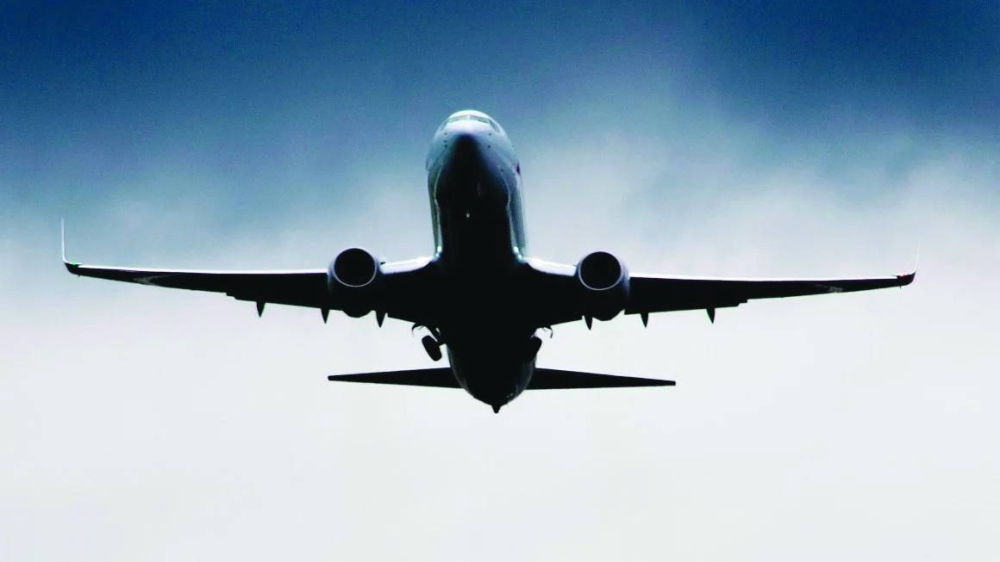
In 2023, more than 380mn "turbulence observations" were generated by the global aviation industry, according to International Air Transport Association.
At present, some 21 airlines participate in the IATA Turbulence Aware Platform with more than 2,000 aircraft providing data daily.
Turbulence is certainly a major safety concern. Every year, a significant number of people get injured by turbulence, while not wearing seatbelts. Cabin attendants are particularly at risk.
Occasionally, turbulence events require an aircraft to divert, with all the inconvenience and associated costs that entails. Lacking accurate information to guide them, pilots may opt to minimise risk, but this can adversely impact fuel costs.
With industry-wide sharing of actual occurrences, in real time, pilots could take appropriate action with confidence.
Although modern aircraft are designed to withstand turbulence, severe turbulence or encounters with unexpected weather phenomena can put stress on the airframe. This can result in damage to the aircraft structure.
Highlighting the importance of its Turbulence Aware Platform, IATA says that with "objective, automated, in-situ" turbulence reports, dispatchers, pilots and cabin attendants can know exactly where turbulence and smooth air are, and take appropriate action, be able to reassure passengers and cabin attendants and optimise fuel burn.
Recently, IATA expanded transmission of its turbulence aware data for use within industry-leading aviation solutions by The Weather Company, which serves a majority of North American commercial airlines and many others globally.
With this enhancement, participating airlines will soon be able to access Eddy Dissipation Rate (EDR) turbulence data directly through ‘Fusion’ and ‘Pilotbrief’ tools by The Weather Company. IATA Turbulence Aware will be enabled as an additional data layer within these tools, allowing pilots, dispatchers and flight planners to have needed turbulence observations integrated directly into their mission critical applications in one place rather than relying on multiple screens.
Turbulence can impact crew and passenger safety, route planning, arrival and departure times, customer satisfaction, equipment maintenance and more.
Combining IATA Turbulence Aware observations with forecasts from The Weather Company aims to better mitigate the impacts of weather and turbulence for contributing airlines globally.
Accessing real-time, accurate turbulence information enables pilots and dispatchers to choose optimal flight paths, avoid turbulence and fly at optimum levels to maximise fuel efficiency and thereby reduce CO2 emissions.
IATA Turbulence Aware was launched in 2018 to help airlines mitigate the impact of turbulence, which is a leading cause of passenger and crew injuries and higher fuel costs each year.
The platform pools anonymised EDR turbulence data from thousands of flights operated by participating airlines. EDR is the official ICAO and WMO atmospheric turbulence intensity metric.
“As weather grows more impactful due to a changing climate, it is critical now more than ever for aviation leaders to incorporate accurate, real-time, globally scaled weather data and insights within decisions,” said Ravi Vanmali, head of aviation for The Weather Company.
“Reliable weather data and forecasts, combined with human expertise, can help airlines and pilots plan around inclement weather and turbulence, improve crew and passenger safety, and mitigate impact to the bottom line.”
“It is our aim to make access to turbulence-related data as simple as possible. By collaborating with The Weather Company, IATA Turbulence Aware data will be available to pilots and dispatchers through existing flight deck and flight planning applications and tools, enhancing the decision-making process in turbulence mitigation and avoidance”, said Frederic Leger, IATA’s senior vice president (Commercial Products & Services).
While turbulence itself is a common and generally harmless phenomenon, it can have various consequences on airline crew and passenger safety, depending on its severity.
To mitigate the impact of air turbulence, the airline industry employs various strategies and technologies. These include weather forecasting and route planning, advanced avionics and radar systems, communication and co-ordination, turbulence detection systems, improved aircraft design, training and education and in-flight monitoring and reporting.
While these measures can certainly help mitigate the impact of turbulence, it is not always possible to eliminate it entirely. However, through a combination of technology, training, and communication, the airline industry can work to enhance safety and passenger comfort during flights.


